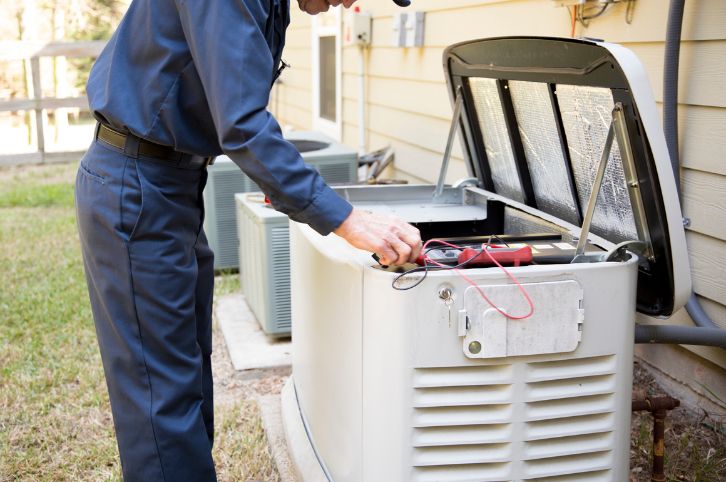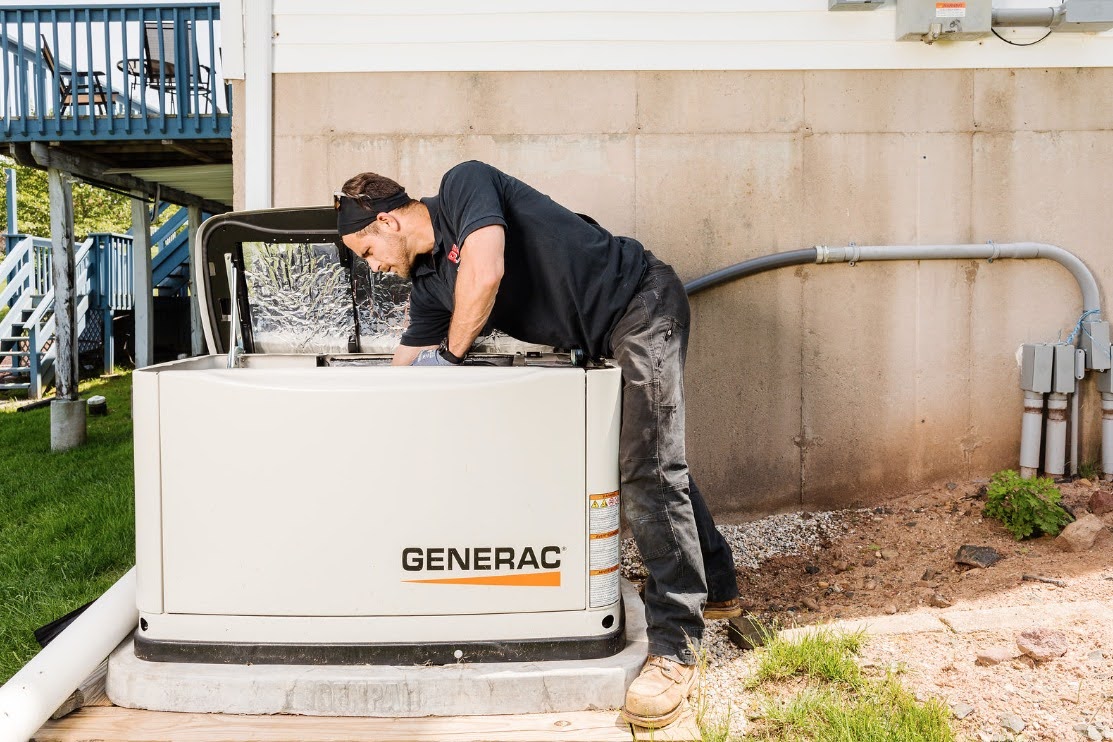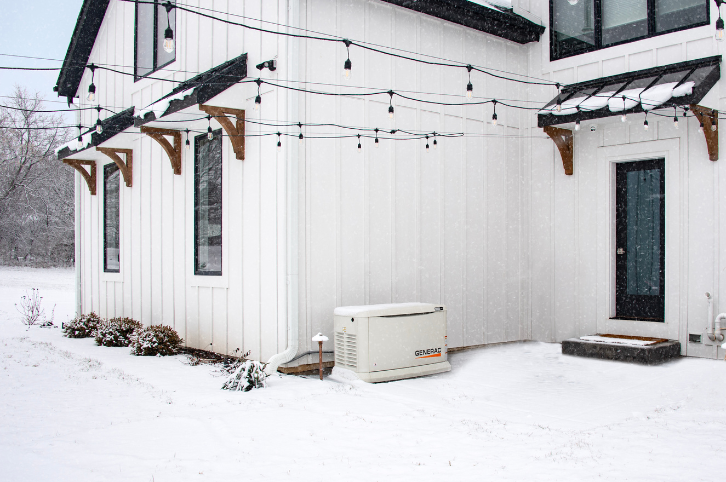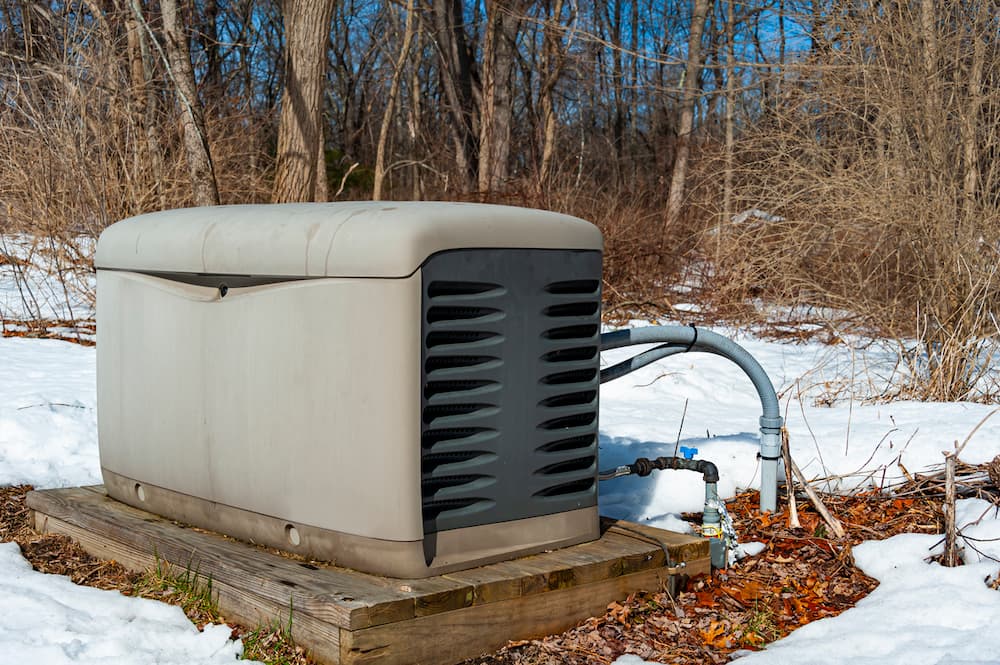
August 11, 2025
Power outages across Connecticut are becoming more frequent and harder to predict. From intense winter snowstorms to fast-moving summer wind events, these disruptions are inconvenient and potentially dangerous for elderly residents, families with young children, or anyone relying on medical equipment at home. For many homeowners, having a reliable generator has been the difference between staying safe and scrambling for backup solutions.
Recent Storm Patterns and Outage Trends in Connecticut
Major 2025 Winter Storms and Resulting Outages
Connecticut faced several intense winter storms in early 2025, with two in January alone leaving over 200,000 residents without power for multiple days. Heavy, wet snow took down trees and utility poles, while sub-zero temps made it dangerous to stay in a home without heat.
Families with home backup power solutions, including standby generators, were able to continue daily life uninterrupted—cooking meals, using medical devices, and staying warm.
The demand for the longest-running generator models grew rapidly after these storms, as residents recognized the need for a reliable backup that could last through multi-day outages.
Summer Storms Causing Outages So Far in 2025
The summer of 2025 has already brought several fast-moving storms across Connecticut, causing widespread outages in both coastal and inland towns. A July storm system, accompanied by high winds and torrential rain, left over 90,000 homes without power—many of them in communities like Guilford, Hamden, and North Haven.
These outages lasted anywhere from 6 to 36 hours, with tree damage and downed lines slowing restoration efforts. With temperatures soaring during these events, homeowners relying on air conditioning, medical equipment, or refrigerated medication were especially vulnerable.
Those with backup generators had peace of mind knowing their homes could stay cool, safe, and functional, while others were left asking, how long do power outages last and wishing they’d been more prepared.
Outage Duration Across Different Connecticut Regions
Typical Outage Lengths Statewide
How long do power outages last in Connecticut? On average, storm-related outages in CT range from 6 to 48 hours. However, in more rural towns, recovery can take much longer due to lower priority on utility response schedules.
Coastal Versus Inland Recovery Variations
Coastal towns like Clinton and Madison often see faster restoration times due to dense population and proximity to grid infrastructure. Meanwhile, areas like Bethany or Killingworth may wait much longer. This variation makes generator run time a critical factor when choosing a system that suits your location and lifestyle.
Generator Coverage During Outages
How Long Will a Generator Run?
With proper maintenance and enough fuel, most whole-house generators can run for days—some models even longer. Propane systems can typically go 5–7 days on a full tank, and natural gas models can run continuously during outages as long as utility service remains intact.
To estimate your own generator run time, it’s important to know your generator’s capacity and the size of your fuel source. Learn more about keeping your system in top condition with our Ultimate Home Generator Maintenance Checklist.
Homes Without Backup Power Solutions
Unfortunately, many homes still don’t have home backup power solutions in place. After back-to-back outages, more CT homeowners are realizing that relying on flashlights and hoping for a fast grid fix just isn’t cutting it. For those relying on refrigerated medication, CPAP machines, or oxygen concentrators, a lack of power can be a serious health risk.
Generator Performance in Recent CT Power Outages
Winter Outage Performance with Generator Support
During Connecticut’s 2025 winter storms, many homes equipped with standby generators were able to maintain heat, refrigeration, and daily routines, even as surrounding neighborhoods lost power for days. Homeowners with regularly serviced systems reported smooth performance and steady operation throughout multi-day outages.
These extended outages highlighted just how important generator upkeep really is. A properly maintained unit can support critical household functions—including medical equipment, space heaters, and kitchen appliances—without interruption.
Scheduling routine inspections through a generator service plan ensures your system is ready when it matters most and maximizes overall generator run time during long emergencies.
Summer Storms and Generator Effectiveness
As summer storms swept across Connecticut in 2025, many families faced sudden and extended outages caused by fallen trees, wind damage, and lightning strikes. For those with backup generators already in place, the transition was seamless—even during peak heat and humidity.
Generators proved especially valuable for homeowners who rely on electricity for essential care, remote work, or daily comfort. In the face of rising temperatures and unpredictable weather, reliable generator run time meant safety and stability.
Here’s how home generators helped Connecticut families during recent summer storms:
- Medical devices stayed powered, providing peace of mind for those with oxygen tanks, CPAP machines, and other critical health equipment.
- Food stayed safe in fridges and freezers, avoiding spoilage during outages lasting 12–36 hours.
- Home cooling systems ran without interruption, protecting children, pets, and elderly residents from dangerous heat.
- Work-from-home setups continued running smoothly, preventing loss of income or critical communication.
- Lighting and security systems remained active, helping families feel secure even in the dark.
Utility Grid Improvements and Outage Prediction
Infrastructure Upgrades to Enhance Reliability
Connecticut Light & Power and other utility providers have made strides to upgrade outdated lines and improve outage forecasting. Efforts have included replacing aging poles, adding smart grid technology, and investing in automated outage detection systems. These changes are aimed at shortening restoration times and better predicting where damage may occur during severe weather.
Still, experts agree that storms are becoming more destructive, and the grid’s recovery time hasn’t caught up. Aging infrastructure, combined with an increase in high-impact weather events, continues to put strain on Connecticut’s electrical system. As a result, personal backup systems—like home generators—remain the most reliable safety net for families who can’t afford to be without power for hours or days at a time.
Recommendations for Connecticut Homeowners
Assessing Backup Power Needs
Not sure where to start? Ask yourself:
- What critical devices do I need to be powered?
- How long do power outages last in my area?
- How long will my generator run with the fuel I currently store?
If you’re unsure of the answers, our FAQ page can help clarify what system fits your needs.
Selecting and Maintaining a Generator
Choosing the right generator means finding the right balance of size, reliability, generator run time, and fuel source to match your home’s specific needs. Factors like the number of appliances you want to power, whether your system runs on propane or natural gas, and how long you expect it to run all come into play.
At PE Home Generators, we offer dependable whole-home generators designed for Connecticut weather, neighborhoods, and energy demands—including systems that can support multi-day outages with ease.
When selecting a system, consider:
- Power output (kW) — Make sure the generator can handle your home’s essential circuits or whole load.
- Fuel type — Choose between propane, natural gas, or diesel based on local availability and preferences.
- Estimated generator run time — Plan for how long you’ll need backup power, and ensure fuel storage aligns with that.
- Noise level and placement — Keep neighbors in mind and meet zoning/local regulations.
- Automatic transfer switch (ATS) — Ensures the generator kicks on without you needing to lift a finger.
Once installed, we strongly recommend setting up a routine service plan to make sure your unit stays ready year-round. Even the longest-running generator needs professional care to perform when it matters most. Learn more about regular maintenance through our generator service options.
Reliable Backup Power Solutions From PE Home Generators
At PE Home Generators, we help homeowners across Connecticut feel safe, comfortable, and confident—no matter what the weather’s doing.

If you’re ready to build a reliable safety net for your home, our team is here to help with consultation, installation, and full-service support. And if you’re concerned about upfront costs, check out our flexible financing and special offers to make dependable backup power more affordable—with payments starting as low as $129/month.Let’s keep your power on—no matter how long the storm lasts.
Disclaimer: The information provided in this blog is for informational purposes only and should not be considered professional advice. For guidance specific to your situation, please consult a licensed professional.
Recent News

Generator Permitting and Town Regulations in Connecticut
December 16, 2025

The Top 8 Home Projects with the Highest Return on Investment
November 12, 2025

Can You Run a Generator During a Snowstorm or Nor’easter?
November 3, 2025

Portable vs. Standby: Choosing the Right Generator for Your CT Home
October 20, 2025

5 Reasons a Standby Generator Is One of the Smartest Investments You Can Make for Your Home
October 20, 2025

Safely Run Your Home Generator in Rain & Snow
October 17, 2025

